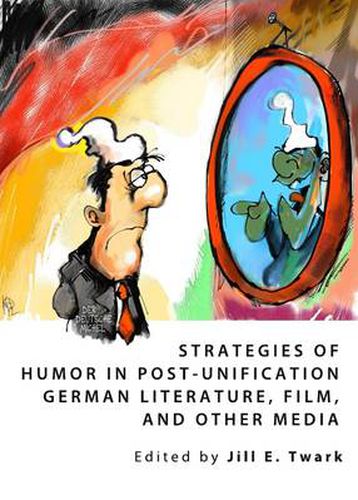Readings Newsletter
Become a Readings Member to make your shopping experience even easier.
Sign in or sign up for free!
You’re not far away from qualifying for FREE standard shipping within Australia
You’ve qualified for FREE standard shipping within Australia
The cart is loading…






The fourteen chapters in this anthology feature original analyses of contemporary German-language literary texts, films, political cartoons, cabaret, and other types of performance. The artworks display a wide spectrum of humor modes, such as irony, satire, the grotesque, Jewish humor, and slapstick, as responses to unification with the accompanying euphoria, but also alienation and dislocation. Kerstin Hensel’s Larchenau, Christoph Hein’s Landnahme, and vignette collections by Jakob Hein (Antrag auf standige Ausreise und andere Mythen der DDR) and Wladimir Kaminer (Es gab keinen Sex im Sozialismus) are interpreted as examples of the grotesque. The popular films Lola rennt, Sonnenallee, Herr Lehmann, NVA, Alles auf Zucker!, and Mein Fuhrer-Die wirklich wahrste Wahrheit uber Adolf Hitler are reexamined through the lens of traditional and more recent humor or comic book theories. The contributors focus on how each artwork enriches four prominent postwall German cultural trends: post-unification identity reconstruction, Vergangenheitsbewaltigung (including Hitler humor), New German Popular Literature (Christian Kracht’s ironic subtexts), and immigrant perspectives (a third voice in the East-West binary reflected here pointedly in Eulenspiegel cartoons). To date, no other scholarly work provides as comprehensive an overview of the diverse strategies of humor used in the past two decades in German-speaking countries.
$9.00 standard shipping within Australia
FREE standard shipping within Australia for orders over $100.00
Express & International shipping calculated at checkout
The fourteen chapters in this anthology feature original analyses of contemporary German-language literary texts, films, political cartoons, cabaret, and other types of performance. The artworks display a wide spectrum of humor modes, such as irony, satire, the grotesque, Jewish humor, and slapstick, as responses to unification with the accompanying euphoria, but also alienation and dislocation. Kerstin Hensel’s Larchenau, Christoph Hein’s Landnahme, and vignette collections by Jakob Hein (Antrag auf standige Ausreise und andere Mythen der DDR) and Wladimir Kaminer (Es gab keinen Sex im Sozialismus) are interpreted as examples of the grotesque. The popular films Lola rennt, Sonnenallee, Herr Lehmann, NVA, Alles auf Zucker!, and Mein Fuhrer-Die wirklich wahrste Wahrheit uber Adolf Hitler are reexamined through the lens of traditional and more recent humor or comic book theories. The contributors focus on how each artwork enriches four prominent postwall German cultural trends: post-unification identity reconstruction, Vergangenheitsbewaltigung (including Hitler humor), New German Popular Literature (Christian Kracht’s ironic subtexts), and immigrant perspectives (a third voice in the East-West binary reflected here pointedly in Eulenspiegel cartoons). To date, no other scholarly work provides as comprehensive an overview of the diverse strategies of humor used in the past two decades in German-speaking countries.